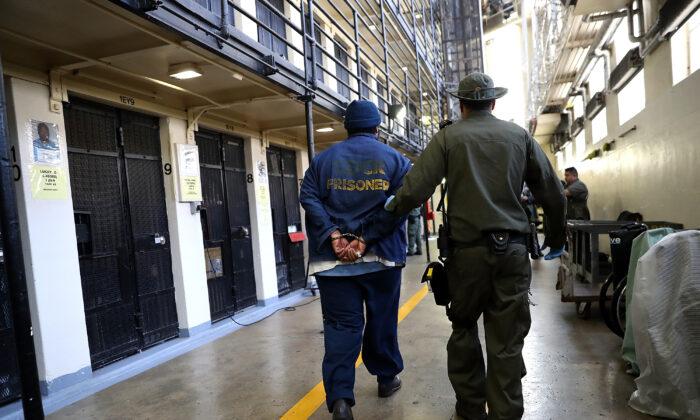The California Department of Corrections and Rehabilitation announced this week it was dismantling its Death Row at San Quentin prison. The 695 convicted murderers currently awaiting their date with eternity will be transferred to other sections. The department announced the area would be “repurposed” into a “positive, healing environment.” Only in California.
The last execution in the state occurred under Gov. Arnold Schwarzenegger, in 2006. In 2010, Gov. Jerry Brown campaigned on not opposing executions, but everybody knew he personally was opposed to them, and there wouldn’t be any while he was in office. Meanwhile, legal challenges tied up the execution dates of those sitting on Death Row.
Until 2014, when Brown was re-elected, not just Republicans but Democrats running for governor had to support executions because doing the opposite was toxic. Gov. Gray Davis signed off on five executions.
In 2016, voters decided two death penalty initiatives. Proposition 62 would have repealed the death penalty. It lost, 53 percent to 47 percent.
Proposition 66 made it easier to carry out death sentences, passing 51 percent to 49 percent. Doing so essentially affirmed capital punishment. In 2017, it was upheld by the California Supreme Court, 5-2.
In 2019, Gov. Gavin Newsom announced a “moratorium” on executions. He couldn’t ban them, because the death penalty is embedded in the California Constitution. Prosecutors still can seek the death penalty in appropriate cases, and juries can impose it. But the governor has the final say in individual cases.
This could come back to haunt him if he runs for president, because the death penalty is supported heavily by voters in several swing states. Last summer, Arizona refurbished its gas chamber, reported The Associated Press, because it “aims to resume executions after a seven-year hiatus.”
Pennsylvania has not carried out an execution since 1999, but last September it upheld the execution sentence of a prisoner, still to be carried out. In the past decade, Georgia has executed 23 criminals and Ohio seven.
On the other side among the swing states, Michigan and Wisconsin don’t have the death penalty.
Turning back to California, at this point an initiative banning the death penalty would probably pass. But under the “moratorium,” it seems unlikely anyone would spend the $3 million or so it takes to put an initiative on the state ballot.
That’s why, since 2010, I’ve predicted there won’t be any new executions in California for many years.
But there’s another aspect to the death penalty: It’s the basis of civil government. Liberals like to think of government operations as handing out a welfare check or fighting climate change. But if you resist strongly enough government laws, regulations and taxes, government agents will come and shoot you. They did so at the Ruby Ridge standoff with Randy Weaver in 1992 and at the Waco Siege in 1993 with the Branch Davidians.
As George Washington supposedly said (the source is disputed), “Government is not reason. It is not eloquence. Government is force; like fire it is a dangerous servant—and a fearful master.”
French philosopher Joseph de Maistre put it this way, “All grandeur, all power, and all subordination to authority rests on the executioner: he is the horror and the bond of human association.”
The point is this: Whether the death penalty is used or not, in the end it backs up civil order. If necessary, if things get bad enough, even states without official death penalties would execute people to restore order. Chaos and anarchy would last just as long as a provisional government was instituted and started executing those who resisted the new order.
I saw this in 1967 during the Detroit riots, when I was 12. They struck 10 miles from where I lived in Michigan, a state with no death penalty. Mayor Jerome Cavanagh, Gov. George Romney (Mitt’s father), and President Johnson, all nice liberals, tried to reason with the rioters. It didn’t work. Eventually not only was the National Guard sent in, so were the 82nd and 101st Airborne Divisions, fresh from fighting in Vietnam. When they started shooting looters, the rioting stopped.
Because the riot was not stopped quickly, 43 people were killed, 1,189 injured, and 400 buildings destroyed. To this day, Detroit, formerly the Paris of the West, has not recovered. Its population dropped from 1.7 million to 639,000 in 2020.
Just in the past two years, we’ve seen what happened in Minneapolis, Portland, Seattle and other cities when government refuses to perform its most vital function of keeping civil order: chaos, violence, and death.
If crime rises high enough in California, politicians will campaign on bringing back the death penalty. Then the executions will begin again.





